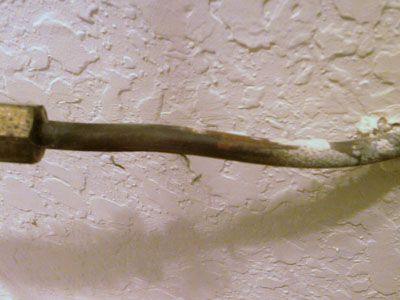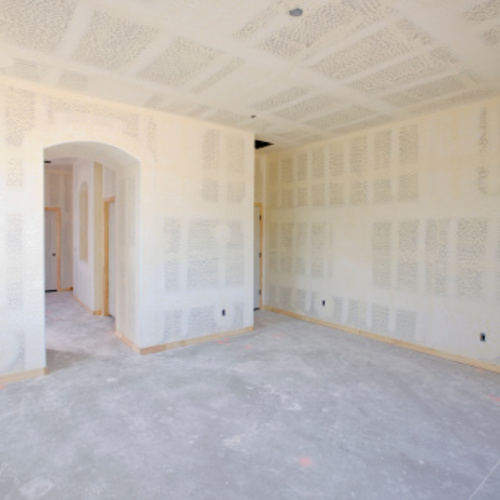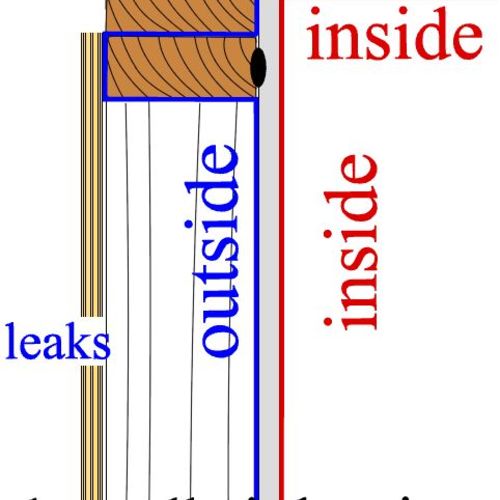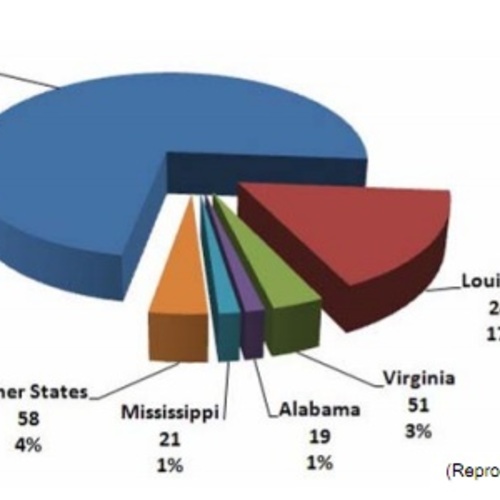
Image Credit: Crew Inspection Services
So far, there are few winners among those afflicted by defects in drywall that had been imported from China and used on many housing projects in the U.S. during the building boom.
Lawyers representing plaintiffs and defendants in the crossfire of lawsuits stemming from the drywall’s tendency to release a corrosive, foul-smelling gas – tentatively identified as a reduced-sulfur compound being produced by bacteria in the wallboard – may be the only ones gaining ground.
At least for the time being.
A New York Times story published last week offered highlights of the litigation scuffle underway among homeowners, builders, insurers, and manufacturers. The situation is especially dreary, and in some cases financially ruinous, for the homeowners, whose list of woes attributed to the drywall’s off-gassing include breathing problems, headaches, nosebleeds, and severe corrosion of metal fixtures of almost every type.
To the extent most homeowners don’t have the financial resources to weather a long-running legal dispute, much less pay for replacement of all the drywall and affected electrical equipment in their homes (a process that could cost, on average, from $100,000 to $150,000 per home, the Times notes), their prospects do indeed look bleak.
A partial reprieve for homeowners in limbo?
Customers of some large homebuilders that used the drywall, including Lennar Corporation, may see some relief. Lennar, the Times points out, has set aside $40 million for home repairs, while it tries to collect from its insurance company and sues several Chinese suppliers and American middlemen. But customers of builders who operate on a smaller scale are unlikely to be handed complete wallboard replacements.
There is at least hope of a remedy, though, for the off-gassing itself. As noted in a Builder Online story earlier this month, Sabre Environmental Services, based in Slingerland, New York, developed a system for pumping chlorine gas – which neutralizes sulfur gases by oxidizing them, and also kills organisms that might be producing the gases – that has been used in oil fields to oxidize well-clogging sulfur gases and deployed to sanitize government buildings after the anthrax attacks in 2001.
More recently, as the Builder story points out, Sabre used its system to disinfect homes with mold contamination. Then, in the spring, builders and insurers contacted Sabre about using the system on homes with off-gassing drywall. In tests on afflicted homes in Fort Myers, Florida, the company says, the chlorine dioxide completely deactivated the reduced-sulfur compounds off-gassed by the drywall, and thoroughly disinfected the drywall, wall studs, electrical outlets, and other wall interiors.
“When we treat a house for Chinese drywall, it is fixed,” Karen Cavanagh, COO and general counsel, told Builder.
Before the Sabre system is rolled out on any scale, however, its relative effectiveness needs to pass muster with government officials (the Consumer Products Safety Commission is leading tests designed to determine the sources of the drywall contamination and their environmental effects) and insurers, who need to be convinced it will work. (The gas does completely dissipate and leaves no residue – hence its approval for use after the anthrax attacks.)
Homes that may be treated with the Sabre system have to be completely cleared of personal possessions, since the daylong chlorine dioxide treatment will bleach certain objects. Beyond that expense, the treatment itself would cost about $10 to $15 per square foot, although Sabre says it developed a potentially more-cost-effective method during the tests in Fort Myers, where up to 10 homes at a time where treated with one application.
Weekly Newsletter
Get building science and energy efficiency advice, plus special offers, in your inbox.














3 Comments
Chinese Drywall
While the chlorine dioxide treatments are brilliant and may save some homeowners from foreclosure, the cost is still high and guess who is not going to pay it? The homeowners’ insurance companies. Not only are most insurance companies refusing to pay claims for repair/replacement of the defective Chinese drywall, they are dropping the insurance coverage on the affected homes until the owners repair or replace the drywall. In fairness, this is more of a warrantee issue than a casualty loss, so unfortunately for the homeowners, I think the insurance companies are justified in not paying out. However, the really unfortunate aspect of this whole mess is that inability to maintain insurance triggers a letter from the insurance companies to the banks holding the mortgage loans and many of these banks are foreclosing (I guess because they want to own these tainted houses) on the unfortunate homeowners who are unable to find insurance coverage on their tainted properties. The builders’ and suppliers’ insurance companies should be paying out and then going after the Chinese manufacturers and suppliers who, to date, are refusing to pay anything.
Long term, the lesson here is that using products from sources (in this case, China) long known to be unreliable and long known to be frequently immune from recourse, is risky business. As builders and remodelers, we need to understand the risks associated with using unproven products or products from untrustworthy sources of supply. We should also petition our senators and representatives to put pressure on China to improve its standards and hold their exporters liable for incredible failures like this. And where are our standards relative to imports such as drywall, which may not be as obvious as things like food and drug items in terms of standards and testing?
Those of us who have been in this industry a while can remember many instances of product defects or failures and we know that doing business with reputable manufacturers and suppliers who stand by their products is often less expensive in the long run and it is surely less stressful, should there be a problem. One example that comes to mind is the failure of the early fiberglass mat shingles produced by a number of different manufacturers during the '80's. They were completely failing after only a few years and the big US companies that produced them stepped up to the plate and reimbursed the affected property owners for both materials and labor, to replace the defective shingles. I know this because I did some warrantee replacement work for one of these companies in the ‘90’s and today, I use all of these companies roofing products with confidence, because they proved themselves worthy of my trust.
Defective and toxic drywall
Defective and toxic drywall manufactured in and imported from China has forced thousands of Americans to leave their new homes. It has caused skin irritations and trouble breathing.
As more time passes, more homes are being tested and eventually gutted of this serious health concern. No home is safer than another. If you live in new home, it is possible it was constructed using this inferior and dangerous product.
New homes in Louisiana and Nevada to multi-million-dollar condos in Florida, where the problem started, are included. If you've been affected, or know someone who has or may be, please read this Web site for a complete dossier on the subject:http://chinesedrywall.org/
replacing electrical wires
Is there any science showing that the wiring must be replaced? I'm aware that circuit boards, appliances (including electronics), and ac coils may need replacement, but wiring is protected for the most part.
Has anyone out there done any testing in this regard?
Are electrical panels adversely affected (circuit breakers)?
Please let me know.
Thanks,
Wynn
Log in or create an account to post a comment.
Sign up Log in